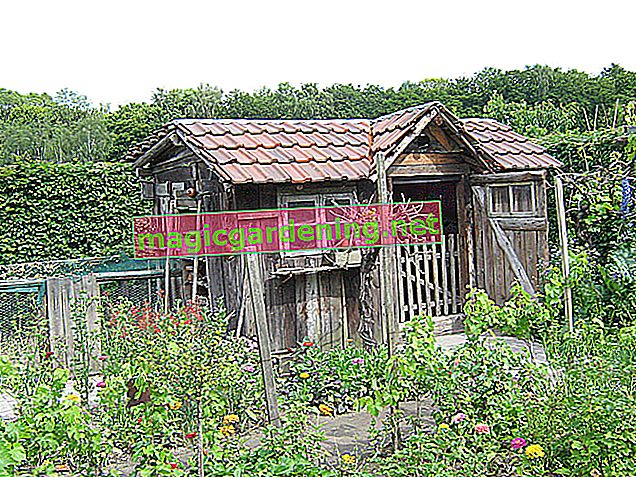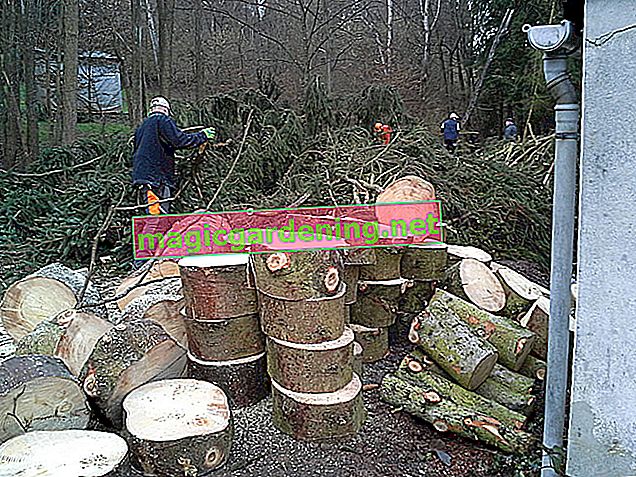
What are the costs of felling?
How high the costs for this measure will be can only be roughly estimated, as it is influenced by numerous factors.
also read
- Felling trees - You also need a permit for trees in your own garden
- Can you vaccinate a tree and protect it from disease?
- Felling trees on private property - this is important to note
The following table provides an initial overview:
| Cost overview | price |
|---|---|
| Approval | 25 to 100 EUR |
| Exemption, the tree must be between 01.03. and 30.09. be felled | 80 - 120 EUR |
| Cut the deciduous tree in one piece | 25 - 40 EUR per meter |
| Cut down deciduous trees piece by piece | 35 - 40 EUR |
| Chop down the conifer in one piece | 20 - 25 EUR per meter |
| Cut down the conifer piece by piece | 30 - 35 EUR per meter |
| Remove the root | 75 - 175 EUR |
| Disposal of the green waste | 100 - 150 EUR |
| Total deciduous tree, 20 meters high | 600 and 1,100 EUR |
| Total cost of conifer, height 20 meters | 550 - 1,000 EUR |
If you do not want to use the wood privately, for example as firewood, you can leave it to the executing company. How much you get for the raw material varies from region to region. The costs can almost always be halved, so that you only have to pay between 250 and 550 EUR for the felling in one piece. If it is necessary to cut down the wood piece by piece, the total costs for a 20-meter-high tree are around 350 to 850 EUR.
Please note that these costs may vary depending on the region. These can also vary within the same municipality. It is therefore always worthwhile to obtain offers from different companies.
What factors affect the price?
No precipitation is like the other. The individual circumstances influence the price you have to pay for this work:
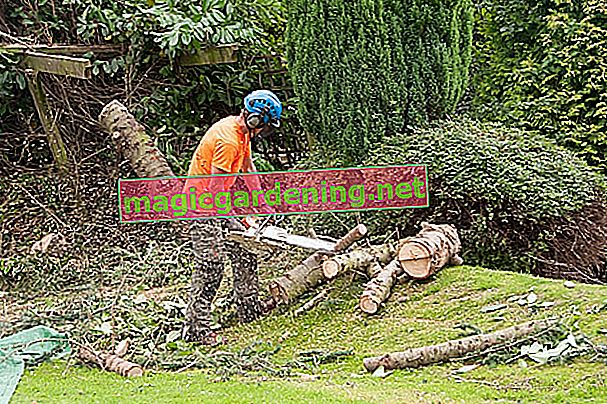
- As a rule, you need a permit from the Horticultural Office or the Office for Environmental Protection and Occupational Safety to fell a tree with a trunk diameter of over eighty centimeters. The cost of this varies from municipality to municipality.
- The bigger and thicker the tree to be felled, the higher the effort and therefore the price.
- If the felling turns out to be complicated and / or if you want additional work such as disposing of the root stock, this will also affect the costs.
- Would you like to recycle the wood yourself or do you leave this to the experts?
- If a road has to be closed and special machines such as a lifting platform are required, this makes felling more expensive.
- If it is necessary to rearrange the tree during the nesting and breeding season, you must expect additional costs.
In particular, the height, strength and location of the tree affect the price. This can make road closures necessary. If the falling wood threatens to damage buildings or power lines, it may have to be removed piece by piece. This takes significantly more time, which in turn affects the overall costs.
When can trees be felled?
The Federal Nature Conservation Act regulates when this work may be carried out. Felling is prohibited in the nesting and breeding season from March 1st to September 30th.
When you are allowed to have a tree felled outside of this period, there are certain regulations that vary greatly from state to state and from municipality to municipality. You should therefore inquire with the responsible authority in advance of this project.
If you think a tree is no longer healthy and needs to be felled for this reason, it is advisable to carry out a tree top inspection together with a professional arborist. More often than expected, this can still be saved with a professional cut and appropriate maintenance measures.
Do I need a felling permit and what does it cost?
When it comes to felling a tree, the property owner's decision-making power is restricted by law. Deforestation requires a tree felling permit from a specified trunk diameter. You can obtain this from the environmental and nature conservation authority of the responsible municipality or, alternatively, from the public order office.
In order for a tree to be felled, one of the following requirements must be met:
- The wood is sick.
- Loss of the tree's ecological function.
- Negative influence on the development of the surrounding trees.
- No growth typical of the species.
- The permitted use of land is prevented.
- The tree disrupts necessary monument protection measures.
Factors such as:
- The falling of smaller branches, leaves and fruits.
- The resulting soiling of gutters and downpipes.
- Shadow formation to the normal extent.
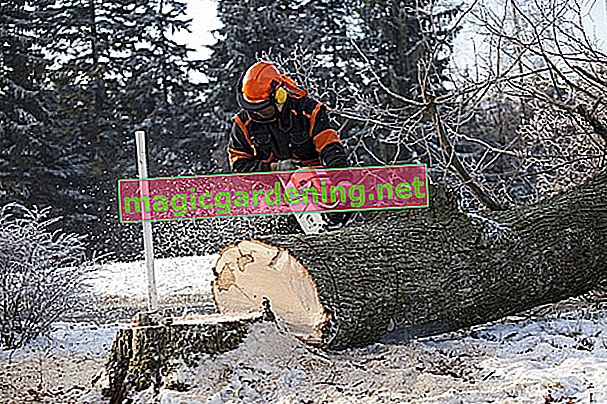 Depending on the municipality, the tree felling permit costs between 25 and 100 EUR. You will usually receive this within three weeks.
Depending on the municipality, the tree felling permit costs between 25 and 100 EUR. You will usually receive this within three weeks.Important: You should not cut down any trees without a permit, as this can be expensive. It can cost you up to 50,000 EUR if you knock down a tree without permission. Fruit trees that do not exceed a certain height are excluded from the approval process. You can obtain more precise details from the above-mentioned offices.
How does the specialist proceed with the precipitation?
The most modern machines are often used in a felling. This makes a precise assessment of the situation and planning necessary. As a rule, the professionals proceed as follows:
- First, the condition of the tree is assessed.
- It is specified in which direction can be felled so that neither people nor animals are endangered or buildings are damaged.
- The expert assesses whether parts of the crown have to be removed in advance to ensure controlled precipitation.
- You or the contracted company must then obtain approval for this measure.
- Only when this is available does the precipitation begin. Different cutting techniques are used here.
- If you would like to have the root stock removed, you can also have this work carried out by a specialist.
- Disposal can also be taken over upon request.
Alternatively, can I cut the tree myself?
With smaller trees in particular, you can do the felling yourself. However, you should have the necessary expertise and equipment.
For the latter you have to expect the following costs:
| Cost overview | price |
|---|---|
| Part of the protective equipment | Costs from |
| working gloves | 10 EUR |
| safety goggles | 10 EUR |
| Cut protection gloves | 75 EUR |
| helmet | 40 EUR |
| ear protection | 15 EUR |
| Chainsaw protection pants | 75 EUR |
| Work shoes | 50 EUR |
Please note that you are only allowed to use this tool on your own property without a corresponding chainsaw license. But even in this case it is advisable to attend a sawing course for your safety . For this you have to calculate between 50 and 400 EUR , depending on the provider . In this you will not only learn how to use the chainsaw correctly, but you will also be instructed in how to proceed with the felling.
Important: Remember that you can only cut down trees in spring and autumn. You are only allowed to make gentle shape and maintenance cuts to keep the trees healthy, even in the summer months.
I'm in trouble with the neighbor. Do I actually have to cut down a tree at its request?
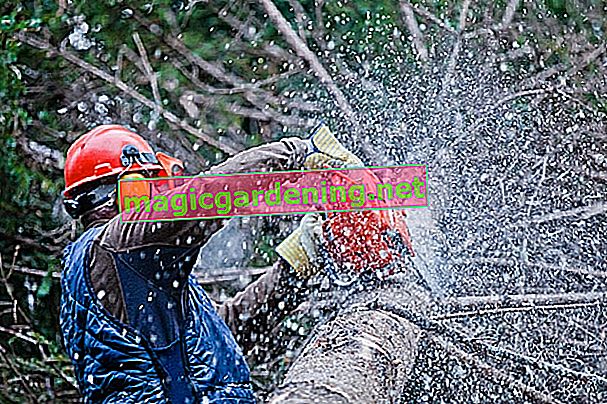 Unfortunately there is no nationwide regulation in this regard. The tree protection ordinance of the federal states regulates when a wood may or must be felled. Before you pick up the saw, you should ask the environmental agency or the municipality whether the neighbor is right with his complaint.
Unfortunately there is no nationwide regulation in this regard. The tree protection ordinance of the federal states regulates when a wood may or must be felled. Before you pick up the saw, you should ask the environmental agency or the municipality whether the neighbor is right with his complaint.In order to avoid disruptions, there are defined limit distances that must be observed from the neighboring property. Depending on the neighboring law of the respective federal state and the tree protection statute, these are between one and four meters. If the distance is not reached, the neighbor may, under certain circumstances, request that the tree be felled.
The Tree Protection Ordinance often applies to very large, old trees. So the neighbor has to accept shadows and falling leaves. However, he can insist that overhanging branches be shortened.
Our tip: If the neighbor plants a tree and falls below the limit, you should act quickly. The claim expires five years after the tree has been planted and you can only request that the wood be felled or moved in exceptional cases.
Are there alternatives to tree felling?
Often an old tree can remain standing through professional tree care and security. This allows:
- Preserve the vitality and thus also the stability of the tree.
- Treat diseases.
- Influence the direction of growth.
- Minimize the consequences of damage that has already occurred and a weakening of the crop.
If necessary, seek advice from a specialist. This initial consultation is usually free of charge. There are regionally different costs for tree care , depending on the effort, between 40 and 100 EUR per hour and person.






